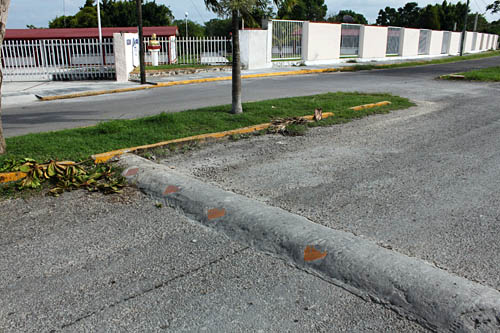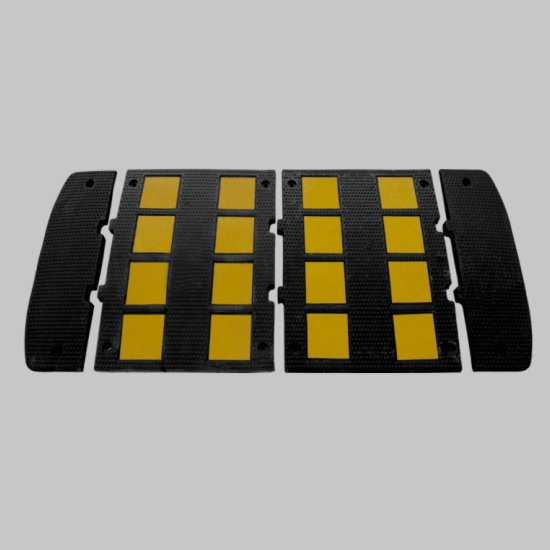You will definitely see speed bumps on roads every day. This tool was basically created to decrease the speed of vehicles. Have you ever thought about who invented this simple solution for such a big problem? Let’s discuss it in detail.
The Origin of Speed Bumps
As you know, today’s generation is very fast. So, to slow down the speed of cars, bikes, and automobiles, speed bumps came into existence. Speed bumps are devices that are used to slow down traffic.
Generally, these are available in different types, materials, and sizes (according to dimensions). Most speed bumps are installed on roads where the speed limit is under 40 km/h (25 mph).

The Inventor of Today’s Speed Bumps: Arthur Holly Compton
In 1953, Arthur Holly Compton (a famous scientist) invented this smart and modern gadget. He was the first person to notice the gap in road safety measures. He designed it in both single and double bumps.
He used his knowledge of physics and designed it in such a way that car drivers and walkers feel secure. Mainly, its edges were sloped and angled for the safety of vehicles. Moreover, the top part was not curved. It was nearly like a flat platform. For the security of pedestrians, this tool was raised 7 inches above the road.
Evolution of Speed Bumps Over the Years
Did you know these speed bumps were invented before the invention of cars? Yes, this is the fact.
The First Evidence of Speed Bumps
When history experts uncovered the ancient Roman city of Pompeii, they found different road safety tools on the streets. Basically, when Mount Vesuvius erupted in AD 79, it covered the city with lava. This helped to preserve these road features. After years of research, some structures like bumps and jumps of concrete were found in Pompeii. They were actually used to slow down carriages and chariots.
1906: Chatham Borough, New Jersey
After that, if we talk about New Jersey, they also planned to make crosswalks that have an average height of 5 inches. These crosswalks were similar to the speed bumps.
At that time, many towns and cities were thinking of trying this type of method. But Chatham Borough (a small town with its own local government) was the first to try it. In the past, cars could drive as fast as 50 km/h (30 mph). But their brakes did not work as well as today’s cars. That’s why the need for bumps occurred.
1953: A New Era of Speed Bumps
Even with all these inventions, it was not an easy job to make modern road bumps. It needed the proper size and measurements. In 1953, Arthur Holly Compton came and solved this problem by creating a tool that is safe and works well in every condition.
1970s: A Speedy Entry in Europe
In the 1970s, traffic controllers and major authorities were trying to enhance road safety. Basically, they tried many different ways to secure roads. But the speed bump became one of the most effective solutions.
But if we specifically talk about the UK, then officially, speed bumps were placed on UK roads in 1983. In addition, it was done by a law known as Highways (Road Humps) Regulations.
Early Implementations and Public Reaction
United Kingdom
Right now, in the UK, there are approximately 42,000 speed bumps. These are installed near hospitals, markets, schools and commercial buildings where the roads are busy all the time.
Firstly, when the bumps are placed, many people appreciate the authorities. On the other hand, some vehicle owners complained of discomfort and car damage. But now they have become a common part of urban areas.
China
China took a unique approach by even installing pedestrian speed bumps. You can see them in Tai’erzhuang (a town on the Beijing-Hangzhou Grand Canal). These 50 bumps are painted with yellow and black lines.
Some citizens saw it as a safety effort. But many others were confused due to its installation point.
Paris
In 1994, the government of Paris issued some rules and regulations that were against road bumps. After that, a pamphlet was published that violated those rules. As a result, the installation of speed bumps started at a wide level. But due to the negative public reaction and violation of the rules of 1994, these bumps were removed in just two weeks.
Italy
In 1990, Italy started using speed bumps on a large scale. But their speed bumps are not designed according to modern specifications. They just placed a height limit to decrease the speed of vehicles.
That’s why a study conducted on speed bumps’ performance in Calgary shows that their speed bumps are not so effective. Moreover, the drivers were also not feeling comfortable with these bumps.
Modern Integration of Speed Bumps
As you know, speed bumps protect pedestrians from accidents. But there were some negative points in the design. So, higher authorities always try to improve things more and even more. So speed bumps also evolved over time.
Speed Cushions
A newer version of speed bumps was called a speed cushion. This is basically made in such a way that emergency vehicles like ambulances and fire trucks can go easily. Because they are placed in the middle of each lane. Moreover, there are small gaps and sloped edges as well.

Smart Speed Bumps
After speed cushions, smart speed bumps come into the market. These speed bumps can adjust their height according to the speed of the vehicle. In addition, traffic controllers can control them manually. But this thing is a little complex and expensive.

Liquid Speed Bumps
With time, liquid speed bumps came into existence. These bumps are specifically designed to stop rash drivers. These bumps are made up of a tough plastic tube that can be banded a little.
In these tubes, a special type of liquid non-Newtonian fluid is used. When a speedy car crosses over them, they feel like a hard speed bump. Otherwise, they just feel like a soft cushion.
Over time, many other variations also came into the market, like pressure sensors, integration of LED, and IoT connectivity. But these are less familiar.
Conclusion
At last, we can say that speed bumps play a vital role in road safety, especially near schools, hospitals, markets, and commercial buildings. This tool helps to reduce accidents. If you are thinking about road safety in your area, then speed bumps can be a simple and effective solution.
For More Helpful Resources:


-80x69.png)

